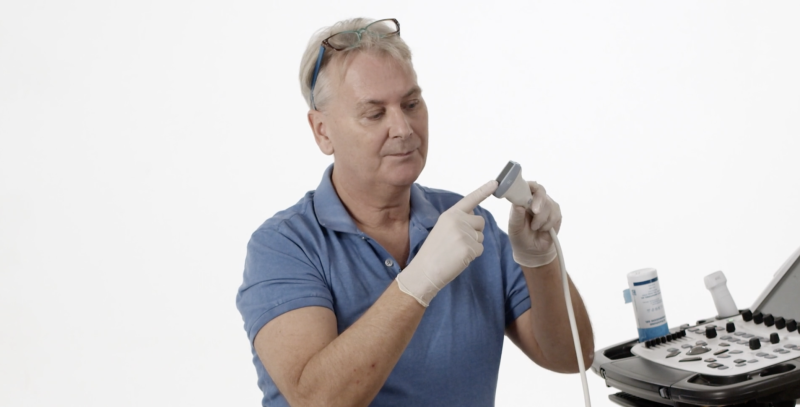Abracadabra
Welcome, ladies and gentlemen, to this world of magic: medicine! A world of mystery, uncertainty and surprise. We chose to be part of this world when we entered our Medical School and the day we graduated we actually received our magic wand! It is not by chance that, in the dark Middle Ages, doctors were seen as powerful wizards or witches. And still today, in some places in Southern Africa, traditional healers as the sangoma (diviner) or inyanga (herbalist) are effectively shamans. They fulfill different social and political roles in the community, including divination, healing physical, emotional and spiritual illnesses and are highly revered and respected in a society where illness is thought to be caused and healed by witchcraft. Now, enough said! My dear, take a seat and enjoy the following magic show!
Setting the stage
Mr. Peter is a middle – aged man with a really interesting medical history. At the age of 40, he was diagnosed with severe aortic regurgitation, ascending aortic aneurysm and paroxysmal atrial fibrillation. He underwent successful surgical repair of both the aortic valve and the ascending aorta (size reduction). Five years later he again developed paroxysmal atrial fibrillation and was treated successfully with antithrombotic- and beta-blocker therapy. But this is not the end of the story. Six months later Mr. Peter experienced syncope. The loop recorder he received showed complete AV-block with a pause of over five seconds. What now? One option was to “trash” the beta-blocker, the other to implant a DDD pacemaker and continue with the beta-blocker (which effectively treated his paroxysmal atrial fibrillation). We chose the second option. The transthoracic echocardiogram performed after the procedure showed no pericardial effusion or tricuspid valve damage. Only mild degree of tricuspid regurgitation (TR) was present. Mr. Peter was happy.
The show is about to begin
We met Mr. Peter four months after the PM had been implanted. He was complaining about dyspnea and was admitted to our hospital to have his PM checked. Off course we also performed an echocardiogram.
What’s inside my magic hat…
Ladies and gentlemen, open your eyes…I am ready to show you what’s inside my magic hat! Surprise, surprise, we find significant tricuspid regurgitation.
Four chamber view: Moderate to severe TR.
Oh, and look at the strange TR signal. And NO, this is NOT a mitral inflow signal recorded up side down!

Biphasic TR velocity signal.
While Mr. Peter’s aortic valve was still okay, something must have happened with his tricuspid valve. Could the problem be solved? Yes it could. Ladies and Gentleman “abracadabra”! Wow, look what happened! All of a sudden only mild tricuspid regurgitation!
True magic, only mild TR is present.
Lo and behold, even the TR signal looks different now.

Totally different shape of the tricuspid regurgitant signal.
This is what we initially expected.
Believe it or not, we could play the trick back and forth many times. Are you ready for the trick once more? Mild TR - abracadabra – severe TR
Comparison before and after. Once it is here, then it is gone.
The magician’s secret
Magicians don’t usually reveal their tricks, but for the sake of teaching we will: the magic spell was not enough to solve Mr. Peter’s problem! We simply switched his PM off and on. Dyssynchrony was causing tricuspid regurgitation. Take a look at his ventricle with and without pacing.
Pronounced dyssynchrony with the pacemaker turned on (left).
Dyssynchrony is abolished once the pacemaker is off (right).
Here is the entire story. As it turned out, Mr. Peter was out of luck. His pacemaker had a rare technical problem, which caused his battery life to drain too quickly. Once the pacemaker reached EOL (End of Life) it went into ERI (Elective Replacement Indicator) mode. In Mr. Peter’s case this meant constant VVI pacing at 65/min. Before that, Mr. Peter’s pacemaker was rarely active. Then he developed a pacemaker syndrome (VVI pacing in sinus rhythm + dyssynchrony). This was the cause of his symptoms. When the PM generator was replaced and appropriate pacing was re-established, Mr. Peter’s symptoms disappeared and his tricuspid regurgitation was again mild.
Key messages to take home
So, guys, whenever a similar case comes to your attention, please, remember two important things. Firstly, causes of TR in the presence of pacemaker can be both mechanical (the PM lead itself is responsible for leaflet damage or inappropriate leaflet coaptation) and functional (TR is due to interventricular dyssynchrony). Secondly, “abracadabra” – in Aramaic avada kedavra - is an ancient spell meaning “let the thing (illness) be destroyed”. Shout it loud whenever you need some supernatural presence: it may help!

Anna-Maria Pistritto
Best,
Anna
PS: If you want to become an echo magician yourself, sign up for our Masterclass course now.
PPS: Want to read more from Anna or 123sonography?


